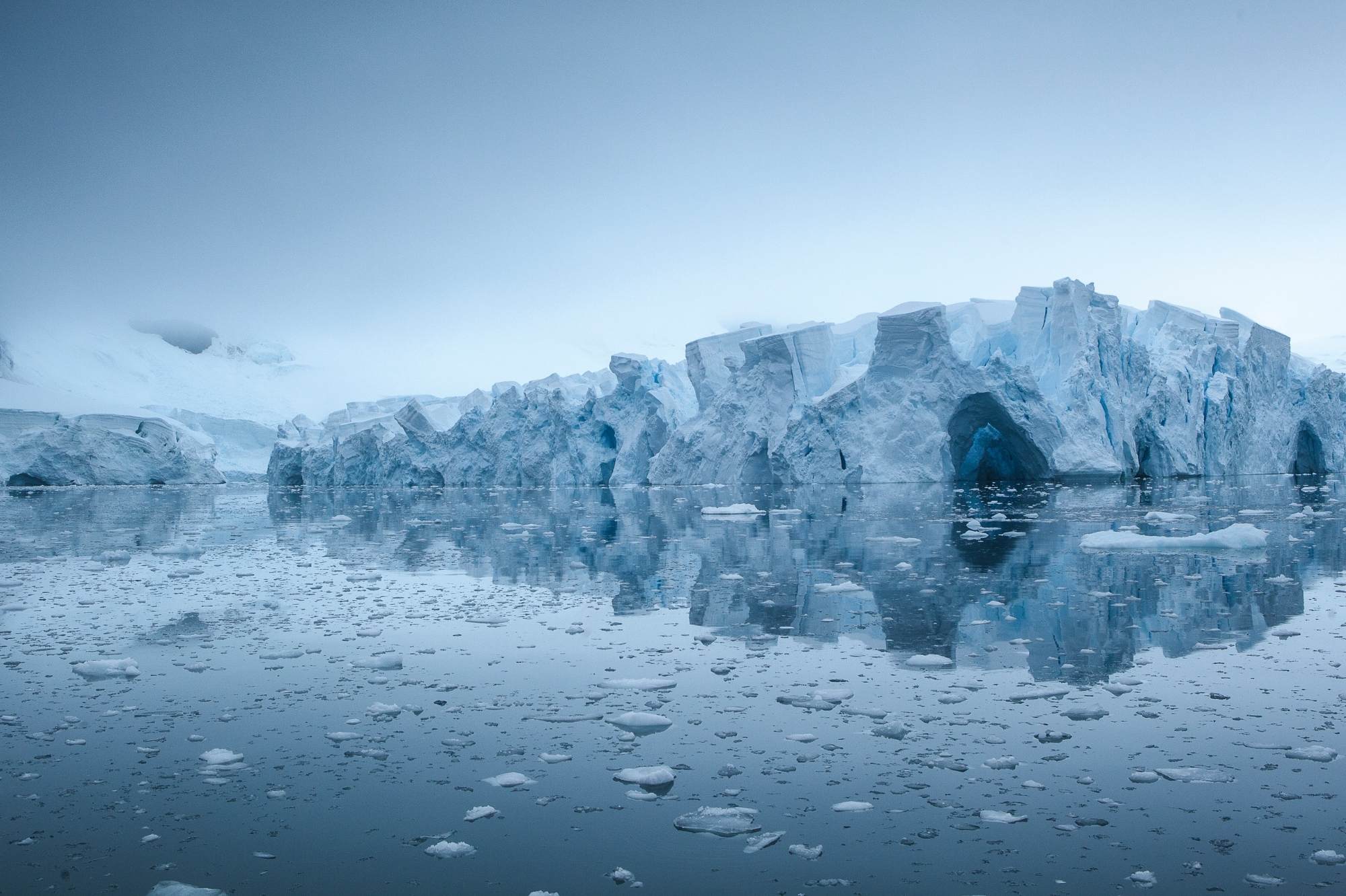
The cryosphere, a term derived from the Greek word “kryos” meaning cold, refers to the frozen portion of the Earth’s surface. It encompasses all areas where water exists in its solid state, including ice, snow, glaciers, permafrost, and sea ice. The cryosphere plays a crucial role in regulating global climate patterns and is home to unique ecosystems and natural phenomena.
In this article, we will dive into the fascinating realm of the cryosphere and uncover 13 intriguing facts about it. From its immense size to its impact on sea level rise, the cryosphere holds immense importance in understanding our planet’s delicate balance. So, let’s embark on this icy journey and discover the wonders of the cryosphere!
Key Takeaways:
- The Cryosphere, made up of ice and snow, holds 69% of the world’s freshwater and plays a crucial role in regulating the Earth’s climate and environment.
- Climate change is causing the Cryosphere to shrink, leading to sea-level rise, habitat loss for polar bears, and potential water shortages in some regions. Understanding and protecting the Cryosphere is vital for our planet’s future.
What is the Cryosphere?
The Cryosphere refers to those regions of the Earth where water is in its solid form, including ice sheets, glaciers, snow, frozen ground, and sea ice. These frozen components play a crucial role in shaping our planet’s climate and environment.
Glaciers Hold a Vast Amount of Freshwater
Did you know that glaciers store about 69% of the world’s freshwater? They are like frozen reservoirs, slowly releasing water over time and providing a vital resource for human consumption, agriculture, and ecosystems.
The Largest Ice Sheet is in Antarctica
Antarctica is home to the largest ice sheet on Earth, covering an area of around 14 million square kilometers. This massive ice sheet holds about 90% of the world’s ice and 70% of its fresh water, making it a crucial part of the global hydrological cycle.
Permafrost: The Frozen Ground
Permafrost refers to permanently frozen ground, found in high-latitude regions such as the Arctic. It holds immense amounts of organic material trapped in ice, and its thawing due to climate change releases greenhouse gases, exacerbating global warming.
Glacier Calving: A Spectacular Phenomenon
Glacier calving is the process where large chunks of ice break off from the edge of a glacier and into the water. This natural spectacle often produces massive icebergs, which can pose hazards to navigation and contribute to sea-level rise.
The Cryosphere and Climate Change
The Cryosphere is highly vulnerable to climate change. Rising global temperatures are causing the shrinkage of glaciers, the melting of ice caps, and the reduction of sea ice extent. These changes have far-reaching implications for global sea level rise and changes in regional climates.
Arctic Sea Ice and the Polar Bear
Arctic sea ice serves as a crucial hunting platform for polar bears. As the sea ice melts, polar bears face challenges in finding food and their habitat is under threat. This highlights the intricate connection between the Cryosphere and the survival of iconic Arctic species.
The Importance of Snow
Snowfall plays a vital role in regulating the Earth’s temperature. The bright surface of snow reflects a significant amount of solar radiation back into space, helping to cool the planet. Changes in snow cover have implications for climate patterns and water availability.
Cryosphere and Water Resources
The melting of glaciers and ice caps contributes to rising sea levels, which can be devastating for coastal communities. Additionally, several regions rely heavily on glacier meltwater for their water supply, making them vulnerable to shortages as glaciers recede.
Ancient Ice Cores: A Window into the Past
Scientists drill deep into ice sheets to collect ancient ice cores, which provide valuable insights into past climate conditions. These ice cores contain trapped air bubbles and dust particles, offering a snapshot of atmospheric composition and temperature throughout history.
Frozen Lakes: Hiding Life Beneath the Surface
Underneath the frozen surfaces of lakes and ponds lies a hidden ecosystem teeming with life. Microorganisms, fish, and other aquatic organisms adapt to survive in the extreme conditions, revealing the resilience and adaptability of nature.
Cryosphere and the Earth’s Albedo
The Cryosphere significantly influences the Earth’s albedo, which refers to its ability to reflect sunlight. The white surfaces of ice and snow reflect more solar radiation back into space, helping to cool the planet. Declining ice cover leads to reduced albedo and further warming.
Cryosphere and Future Mitigation Strategies
The Cryosphere is a critical component in climate models and future mitigation strategies. Understanding its dynamics and monitoring changes are crucial for predicting and mitigating the impacts of climate change on both natural and human systems.
Conclusion
In conclusion, the cryosphere is a fascinating and vital component of our Earth’s system. It plays a crucial role in regulating global climate patterns, preserving freshwater resources, and providing unique habitats for various organisms. Understanding the cryosphere and its dynamics is essential for predicting and mitigating the impacts of climate change.From the stunning beauty of ice formations to the critical role it plays in our planet’s ecosystem, the cryosphere is truly a marvel worth exploring. By studying its characteristics, monitoring its changes, and raising awareness about its importance, we can contribute to the preservation of this fragile system for future generations.So, let’s continue to admire and protect the cryosphere, cherishing its icy wonders while taking action to combat the challenges posed by climate change.
FAQs
1. What is the cryosphere?
The cryosphere refers to the frozen components of the Earth’s surface, including snow, ice, glaciers, ice sheets, permafrost, and sea ice.
2. Why is the cryosphere important?
The cryosphere plays a crucial role in regulating the Earth’s climate, influencing ocean currents, reflecting sunlight back into space, and providing freshwater resources.
3. How does the cryosphere contribute to climate change?
The cryosphere is highly sensitive to changes in temperature and can amplify climate change. Melting ice contributes to rising sea levels and alters weather patterns.
4. What are some effects of melting ice on the cryosphere?
Melting ice leads to reduced albedo, increased ocean temperatures, loss of habitat for polar species, and disruption of global weather patterns.
5. Can the cryosphere recover from the effects of climate change?
While it is difficult for the cryosphere to fully recover from the impacts of climate change, efforts to reduce greenhouse gas emissions and mitigate human-induced changes can help slow down further deterioration.
The cryosphere holds countless wonders waiting for exploration. From the surprising facts about planetary cryospheres to the mind-boggling realities of Arctic sea ice, there's always more to learn. Dive deeper into the frozen world and uncover the secrets hidden within ancient ice cores. The cryosphere plays a crucial role in our planet's delicate balance, and understanding its intricacies is key to developing effective mitigation strategies for the future. Stay curious and keep exploring – the cryosphere has many more fascinating stories to tell.
Was this page helpful?
Our commitment to delivering trustworthy and engaging content is at the heart of what we do. Each fact on our site is contributed by real users like you, bringing a wealth of diverse insights and information. To ensure the highest standards of accuracy and reliability, our dedicated editors meticulously review each submission. This process guarantees that the facts we share are not only fascinating but also credible. Trust in our commitment to quality and authenticity as you explore and learn with us.


